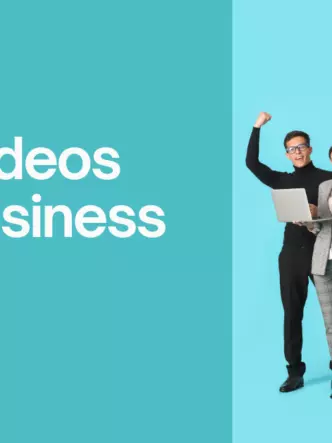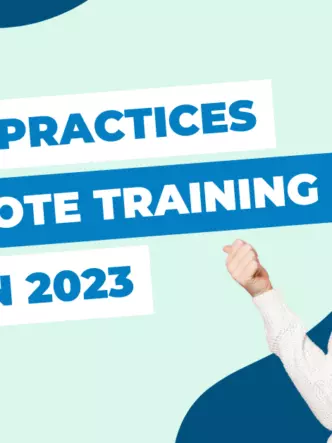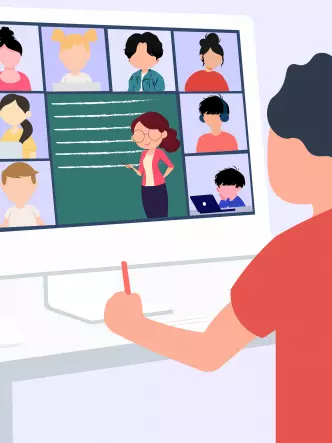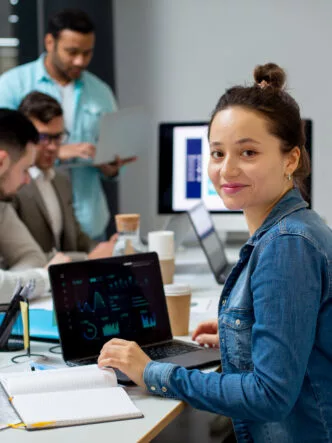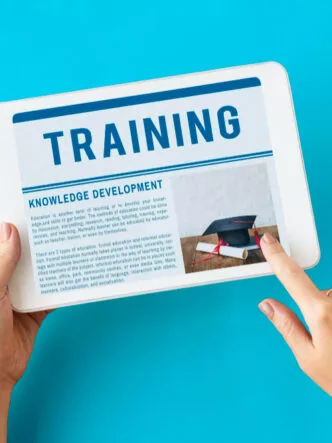The internet and computers are transforming the approaches to learning. Virtual learning is an experience in learning supported by electronic devices both inside and outside the resources of an educational institution.
The learners and teachers are physically separated and they mostly interact in an online environment. Therefore, virtual learning is carried out in a virtual setup using electronic study content developed for live web-based conferencing or self-paced online tutoring and teaching.
Virtual classroom for virtual learning
Virtual classrooms are described as online spaces with features of physical classrooms but in different ways. A virtual classroom ensures that teachers and learners can connect in real-time and accomplish the learning objectives. Students can ask questions and interact with their peers just the same way they would have done in a physical setup but over the internet.
Virtual classrooms can accommodate many students as opposed to a physical class that is limited in capacity. Virtual classrooms use online meeting solutions that can accommodate a large number of participants. This facilitates better participation and ensures that knowledge is more accessible.
The classrooms are synchronous because learners and teachers get online at the same time for immediate interactions. Virtual classrooms also utilize pre-recorded components like presentations, videos, and slides to support learning. The common features of a virtual classroom include:
- Smart whiteboards. Through advanced technology, a digital whiteboard allows teachers to write, touch and swipe as they make real-time demonstrations.
- Instant messaging. Educational chatbots allow teachers to communicate with their learners in an innovative form to motivate students and make classes more engaging.
- Video-conferencing. Web-conferencing software can be used to enhance communication between teachers and learners.
- End–to–end encryption. This technology ensures that the classroom is accessed only by authorized learners.
- Video-recording. Live lectures can be saved for future reference.
- Participation controls. Through these features, teachers can mute students who want to share something during a live discussion after raising their hands virtually.
Benefits of virtual learning
Virtual classrooms are good for learners who want to advance their education while pursuing other things. In a traditional classroom setup, lectures are scheduled to take place in a particular venue and time based on the availability of classrooms. If a student is working and courses are not offered after working hours, it becomes hard for them to balance work and studies.
Online learning allows for flexibility in creating a schedule, which means that students can study at their convenience. Since the student’s schedule is not dictated by classes, they can create time to do other things. They can spend time with their families and focus on their career. All that the learners need is digital devices with stable internet connections and access to supporting tools to further their education.
Virtual learning can provide different ways through which students can save. They don’t have to commute to campus, and therefore, they can save on travel costs. They can also save time because they don’t need to travel in and out of campus.
Every year students attending physical classes spend a lot of money on course materials and textbooks. Virtual learning utilizes virtual resources, which means less money is spent on learning materials. Additionally, some institutions offer discounts for students who enroll in distance learning courses.
There is also the benefit of course variety. Online courses enable students to earn a range of different degrees available in the traditional learning environment. Integrating classwork with technology is beneficial because instead of waiting for too long after exams, students can get immediate feedback.
Through virtual learning, students enjoy a comfortable learning space that feels less robotic. This is because there is human interaction that is needed for a successful education system. Virtual classrooms ensure that learners interact and chat with their instructors and peers without compromise.
Virtual learning can also provide various career advancement opportunities. Online students can collaborate well with international classmates and also enjoy contact with other students. There is also the benefit of one–on–one student-professor interaction, which is essential for learning and networking.
Types of online learning
Online learning is a detailed term that includes different instructional approaches and environments. One of the most common types of online learning is asynchronous online courses.
Through digital teaching tools, these course offerings in this environment are not offered in real-time. Students are provided with learning content to study. They are given assignments and homework to complete within a given time frame.
Interactions take place through wikis, blogs, and discussion boards and there is no meeting time. Asynchronous learning environments are good for students with busy schedules and time constraints. The students can control the learning pace giving them a sense of freedom and more responsibility. Students have enough time to reflect and understand what they learn and can participate in class activities regardless of time zone.
Another type of online learning is synchronous online courses. In these course offerings, instructors and students must interact simultaneously via video, text, and audio chats. Synchronous environments allow students to participate in learning in real-time from a distance.
Through synchronous learning, can ask questions and have them addressed in real-time. They also feel a sense of connection with their peers because they learn together. There is also a sense of collaboration and better engagement among learners.
The third type of online learning is the hybrid courses, also called blended courses. These learning environments allow for both online and in-person interactions. The participants meet physically several times and engage in computer-based communications during the face-to-face sessions.
Principles of online learning
Effective online learning requires designing and structuring the experience to enhance learning interactions and outcomes. To promote effectiveness, online learning should create a common experience for learners. Enhanced virtual interactive learning tools enable the facilitator to monitor and control what students see including slides and video display.
A common virtual experience reduces distraction and ensures that learners focus on the relevant content. Online content is best learned and retained when presented in short bursts. Good instructors can plan carefully to ensure that they deliver the content based on specific ideas.
While chats and polls are a starting point, improved virtual learning tools offer different options to enable the instructor to promote peer instruction. Such options include Q&A for various topics, focused chats, instructor controls, quizzes and games, simplified feedback delivery, and so on.
Students can collaborate and learn from one another through small group projects that support live training programs. Enhanced virtual learning tools encourage actual collaboration beyond speech by promoting interactions.
Another important principle of online learning is motion. The human mind is wired to detect motion. When people interact with a computer, they make something to constantly move. Online presenters should provide a variety of layouts, videos, slides, and interactive features to combat low attention spans among learners.
Enhanced virtual learning tools offer diverse options to promote the continuity of the presentation and keep the learners engaged. Virtual classrooms make the in-person training accessible due to the embedded keyboard commands, closed captioning, enhanced navigational features, color controls, and more.
Facilitating better learning in a virtual classroom
The best virtual meeting software and virtual classrooms have important features that facilitate better learning. One of the things to be considered is the high-quality video chat. This facility perpetuates the human connection feeling to ensure that the host pays attention to students. High-quality video chat can be implemented through various video conferencing apps for Android and Ios.
Every virtual classroom should have real-time instant messaging features to promote effective communication between learners and instructors. Learners should be able to chat with their peers and instructors and clarify small issues that don’t need voice calls or videos.
For classrooms hosting many students in different parts of the world, a video streaming feature is essential. Whereas some virtual meeting solutions are intended for small groups, a virtual classroom must have a powerful video streaming facility.
Virtual classrooms should feature separate student groups for bonding over non-academic and academic subjects. These groups foster a collective appreciation and friendship while at the same time doubling up to allow students to discuss topics and interesting concepts.
An integrated sharing system is needed in virtual classrooms. Secure file sharing allows for collaboration between learners and instructors and facilitates sharing of reports, assignments, and projects in a learning environment.
Marking, annotations, content display, and more diverse explanations can be done through digital whiteboards. The whiteboards can also be used by students during thesis or project presentations. Digital whiteboards are suitable for touchscreen devices.
Virtual classrooms can be augmented with other features because video conferencing software may not be all-inclusive. Third-party integration enables facilitators to leverage the current system to ensure that students benefit more.
Conclusion
Online learning is becoming popular due to the changing educational demands and the current global crisis due to the pandemic. The future of learning is about using technology to promote interactions between learners and instructors meaningfully. Technology should also be included in driving change in the education sector to ensure that the participants have an exceptional experience. Virtual classrooms facilitate global learning and transform content delivery and this trend is expected to continue in the future.


